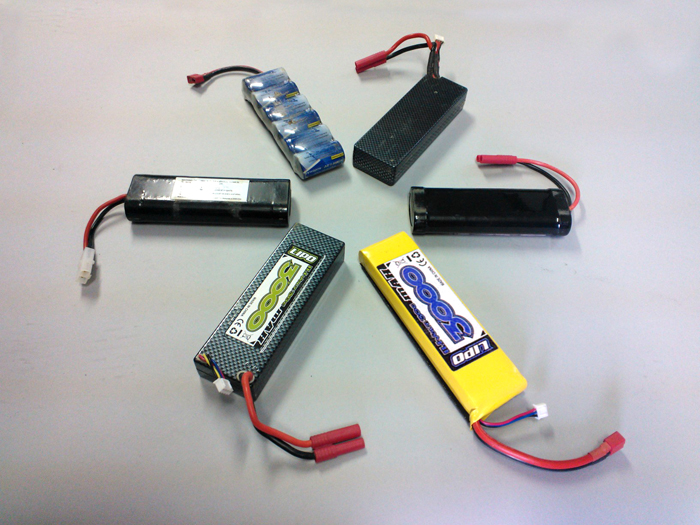Redcat Racing Weekly FAQ: Which RC Battery Type Is Best For Me?
Redcat Racing Weekly FAQ: Which RC Battery Type Is Best For Me?
Have you ever wondered which type of battery to buy?
There are many different battery chemistries on the R/C market today and it
can get confusing knowing which one to buy.
Let’s discuss the three most popular battery types; NiCd, NiMH, & LiPo.
NiCd
NiCd stands for Nickel-cadmium. NiCd batteries were used in RC for a long time
and can be charged by most chargers. They were the first of the three to be
developed. NiCd batteries are similar to alkaline batteries, but NiCd batteries
can be recharged. A NiCd battery can be discharged at high rates without
damage but they are limited in terms of capacity. NiCd packs were the standard
for toy department RC cars. Many R/C enthusiasts prefer to use NiCd packs in
their transmitters because of their ability to hold a charge for long times when
not in use.
NiCd packs for R/C vehicles usually consist of 6-7 cells with a nominal voltage
rating of 1.2v per cell. NiCd batteries can handle high discharge rates, providing
great power, because of their low internal resistance. The most well known
disadvantage to NiCd batteries is their memory. If not fully discharged before
recharging, they will eventually loose the ability to discharge beyond that point.
Unfortunately, NiCd batteries also have a low capacity ability which is why NiMH
took their place in most R/C vehicles.
NiMH
NiMH stands for Nickel-metal hydride. NiMH batteries have larger capacity
capabilities than NiCd batteries but they tend to self discharge quicker (while
not in use). While a NiCd would be preferred in a remote, the NiMH battery’s
high capacity makes it a great choice for R/C vehicles. Like the NiCd battery
pack, the NiMH packs are usually 6-7 cells with a nominal voltage of 1.2v per
cell. NiMH batteries are easy to use and maintain. Most chargers today are rated
for NiMH batteries making them simple to charge. They do not form a memory,
like NiCd, and do not need a voltage cutoff, like LiPo batteries. NiMH batteries
have high discharge ratings, but it’s easy to tell when they are getting low
because the voltage will gradually drop off, slowing the vehicle. The NiMH
battery is the most widely used battery pack in RTR R/C vehicles today because
of their reliable performance and ease of use.
LiPo
LiPo stands for Lithium-ion polymer. LiPo batteries are a completely different
chemistry than both NiCd and NiMH batteries. LiPo batteries don’t require
pressure, as do NiCd and NiMH, which allows them to be constructed without
the same metal casings the other cells use. A typical LiPo battery pack consists
of 2-4 cells with a nominal voltage of 3.7v per cell. LiPo batteries are superior
in performance but require more care when being used. LiPo batteries must be
charged with a LiPo specific charger and must be used with a voltage cut off
device. If a LiPo battery is completely discharged it becomes unstable and will
not properly take a charge. Many of the brushless vehicles come with a LiPo
ready ESC which has a built in voltage cutoff for that reason. LiPo batteries
have a low initial shelf discharge rate but will drain themselves beyond the
minimum safe voltage level if not charged some before storing. Most LiPo rated
chargers have a storage setting for this very reason. LiPo batteries have very
high capacity ratings and an even discharge rate throughout the entire “safe”
discharge cycle. This means full power till the end of each run. The major
disadvantages of LiPo batteries is their instability. Over charging the pack
makes it unstable and can cause combustion and fire. LiPos must be charged
with a LiPo specific balance charger and should be placed inside a LiPo charging
bag, just in case an accident occurs. LiPos have quickly grown in popularity
because of their high capacity and strong performance. If properly taken care of,
LiPo batteries can be used for many years with little loss in performance,
making them perfect for Brushless R/C vehicles.
There are no comments yet, add one below.









